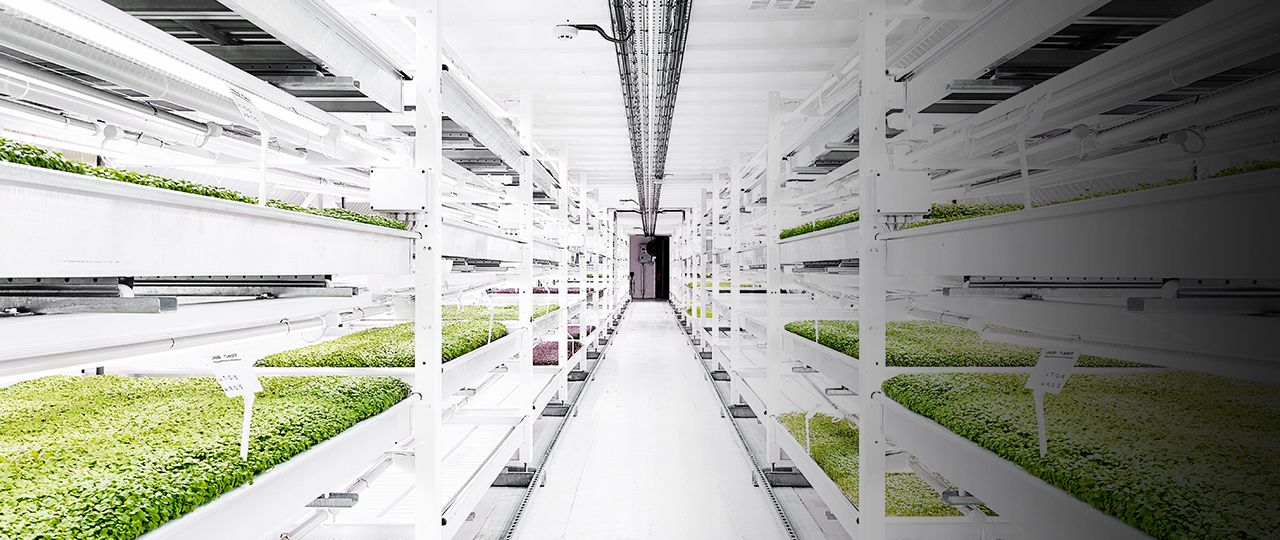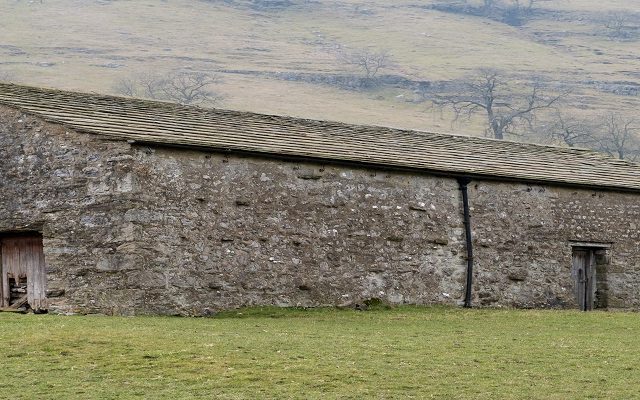Land Business | The inside story: are hydroponics the key to boosting the country’s food production capabilities?
Hydroponics has the potential to revolutionise UK agriculture, and it’s even allowing one company to grow food deep beneath the streets of London. Could it be the key to boosting the country’s food production capabilities?
Thirty-three metres beneath bustling Clapham in south London, hidden in a 6,000 sq m Second World War bomb shelter, there is – incredibly – a farm. It produces two tonnes of micro-greens and salad leaves each month – all without soil or sunlight.
‘We’re producing food from London, for London,’ says Richard Ballard, co-founder of Growing Underground, explaining his company’s commitment to limiting food miles and keeping produce local. Grown hydroponically – without using soil but instead delivering nutrients in a solution – high-value crops such as pea shoots, fennel, wasabi mustard, garlic chives and coriander sprout in trays of nutrient-soaked recycled carpet cutoffs under LED lights.
This produce is supplied to the likes of Marks & Spencer, Whole Foods Market and Ocado, and sold at New Covent Garden and Borough markets. Such is its success that Growing Underground is now looking to expand operations in its tunnels, where only a fifth of the space has been used.
Ballard says the idea for subterranean salad production emerged from discussions with old schoolfriend and Growing Underground co-founder Steven Dring on how to sustainably feed future cities with growing populations. Needing more than £1 million to get started, they raised £650,000 through crowdfunding in 2014, secured investment from fresh produce giant G’s and brought in Michelin- starred chef Michel Roux Jr as a co-director.
BNP Paribas Real Estate, which merged with Strutt & Parker last September, was also involved at an early stage. ‘BNP Paribas were very helpful,’ says Ballard. ‘They helped with the design-build, did assessments on the tunnels to see if they were suitable and accompanied us to meetings with landlord Transport for London to make sure everything was being done correctly.’
Fresh thinking
James Farrell, Head of Rural at Strutt & Parker, says Growing Underground shows how farming can be approached from a completely different direction, looking afresh at the way we use resources and produce food. Many farmers and landowners will need to show similar imagination in the coming years, he believes, for while the government has agreed to match current EU funding until 2022 – three years after Brexit – farming will be very different afterwards.
‘Farming as it used to be will become unprofitable for some, so they will have to look for other ways to develop the profitability of their land,’ says Farrell. ‘There will be new opportunities to create profitable businesses, but the question is, who’s got the entrepreneurial spirit to grab these and run with them?’
Hydroponics offers an innovative way to meet these challenges, says Chungui Lu, Professor of Sustainable Agriculture at Nottingham Trent University. ‘I’m quite positive about the future,’ he says, ‘and think that in the next five to 10 years, there will be a lot of growth in the UK in this area.’
As hydroponic crops are grown in a controlled environment with the optimum delivery of nutrients and water, much larger yields can be achieved in shorter times, says Professor Lu. The closed-loop system also means that pesticides and fungicides are not required, quality control is easier to enforce, nutrients can be applied more effectively and water is recycled, all improving efficiency and protecting the environment, he adds.
Growing Underground can produce a crop of pea shoots in six or seven days throughout the year, according to Ballard. By contrast, growing under glass is dependent on the weather: although crops grow quickly in the summer months, for the remaining nine months of the year, they can take up to three weeks to be ready, he says.
Future growth
So with all these advantages, why is hydroponics still a niche sector in Britain? ‘It’s down to energy costs,’ says Ballard. ‘You can grow an apple tree using hydroponics, but you would produce a very expensive apple. However, if energy costs become lower, more products will become viable.’
People need time to embrace such a radical growing method, says Alex Fisher, founder and CEO of Birmingham-based Saturn Bioponics, which produces hydroponic growing systems. ‘It’s a fundamental change to the methodology of something that has been done in the soil for thousands of years,’ he says. ‘That doesn’t happen overnight.’
Lu agrees. ‘The UK is a little old-fashioned in that people want to keep the old ways – they didn’t want GM food; they want organic food produced naturally,’ he says. ‘Attitudes are still an issue, though I believe people are becoming more receptive to hydroponics.’
With equipment costs coming down, it’s getting easier for new entrants, while technology is further improving efficiency, says Lu. He highlights nanoparticles coated in fertiliser that deliver nutrients into the plant and LED systems that dim or brighten in response to the weather, reducing energy costs.
Fisher says technology will take hydroponics to new levels: ‘It’s already an advanced science, but the more new technologies come into play around sensors, cost-effective heating and lighting, the more precise and consistent it will become.’
Biopharmaceutical crops are set to become more important, says Ballard, with opportunities emerging in rosemary and lavender oils, while Lu predicts a growing demand for herbs used in traditional Chinese medicine.
With the world’s population set to grow from 7.6 billion in 2017 to 8.6 billion by 2030, according to the UN, there is a huge incentive to produce food more efficiently, says Growing Underground’s Dring.
‘There are great challenges to the food system with population growth and the amount of water going into agriculture,’ he says. ‘If you think you can utilise technology to create a more sustainable system, go for it. It’s a challenge – but also an opportunity.’
james.farrell@struttandparker.com
growing-underground.com
Onwards and upwards: The rise of vertical farming
In Japan, Taiwan and China, many cities now feature vertical farms, which produce crops in vertically stacked layers – Japan alone has more than 200 of these ‘plant factories’ – and there are plans for ever-more futuristic urban farm towers, says Nottingham Trent University’s Professor Chungui Lu.
While the Growing Underground urban farm in London is defined as a vertical farm – albeit stacked below ground – most British projects are less ambitious.
Lu has set up vertical farms on campus in shipping containers, and says the idea has attracted attention among hotels in Britain that want to have their own fresh vegetables throughout the year.
Strutt & Parker’s James Farrell says it may be that the initial opportunities for the technology will be in ‘difficult spaces’; if they can’t be used for anything else, they could be repurposed for this type of farming.
But Richard Ballard of Going Underground predicts a move towards more urban farming: ‘As society evolves and food becomes more expensive, we’ll see vertical farms in cities here.’
Read more
This article originally appeared in Strutt & Parker’s magazine Land Business Spring/Summer 2018. Read the full magazine here.






